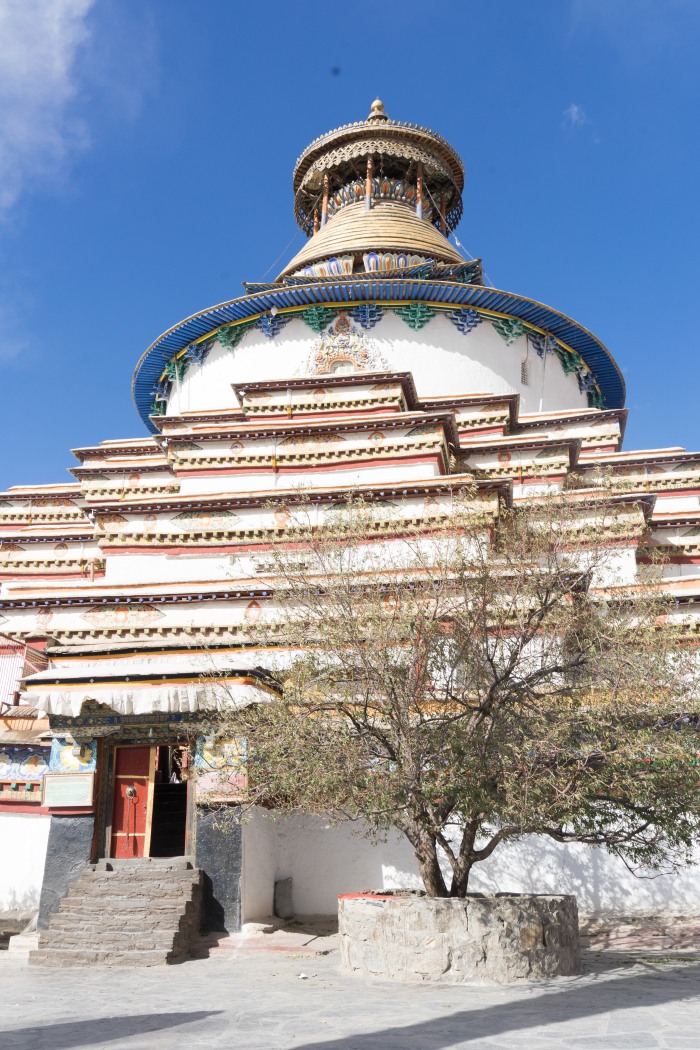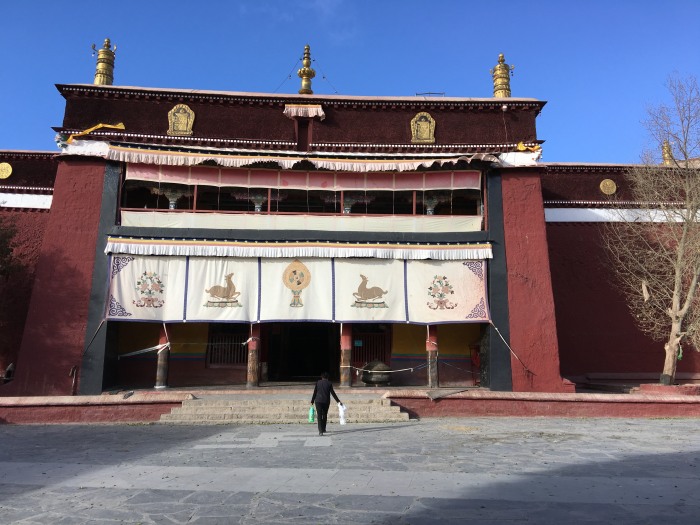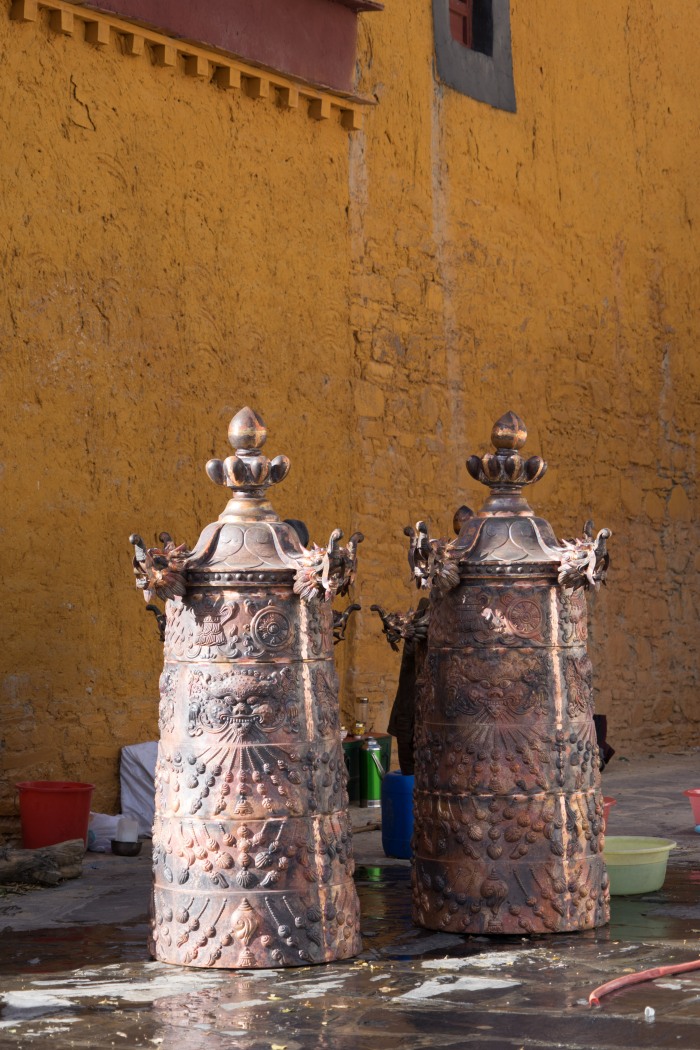I couldn’t have my fleeting trip to Central Tibet not include a visit to Gyantse, the main attraction being of course its celebrated Stupa, Gyantse Palgor choten, with its ancient murals and statues that had survived practically untouched the wear, tear and destruction of the last five centuries. A relatively fragile building made of stone, clay and wood, for the supporting pillars. Constructed around a central core, its religious intention is the same as the stupa in Borobudur; it is meant to elevate the instructed worshiper who circumambulating the stupa, from the bottom to the top, reaches higher levels of spiritual realization through the viewing of the iconographic journey depicted in the form of hundreds of murals and statues distributed throughout the many chapels.
Palkhor Choten was built in the early 15th Century by the Prince of Gyantse during a period of peace and prosperity achieved through skillful diplomacy balancing the influence of Mongol rulers and Chinese Ming Emperors, which enabled the Prince to embark on this ambitious project which comprised several buildings including the famous stupa, whose construction began in 1427. Eventually, it became a large compound of 15 monasteries belonging to three schools of Buddhism, Buton, under Shalu monastery, Sakya and Geluk.


After driving along the Yumtso and going over a high pass, we reached a wide valley with farming villages and fields. It was not until evening that I realized, through shortness of breath, that we were almost 1000 meters above Lhasa. Upon reaching Gyantse we went straight for the stupa, and bought tickets from a monk engrossed in a conversation with another monk. There was no one about save for a few pilgrims and artisans working on copper pieces destined to large statues and temple rooftop decorations. Photos were not a problem here; no need to sneak around, I just paid the 100 Yuan fee.
I admit that I had expected a much more imposing, forbidding structure. It was anything but that. The Choten stood there, where it had for the last five centuries, in the afternoon sun, exuding delicacy and subtlety, all whites, blues and light orange and the glint of gilded copper. It was inviting, and so was the ambiance around it. We began the climb, which was done in stages, circumambulating the structure at each level and entering the many chapels each with its own wall paintings and statues. I was surprised how well everything had survived the cataclysm of the Cultural Revolution and was told that the Chinese military officer who had lodged there had stuffed the chapels with grain to prevent their destruction. Before that, it had probably survived wars, fires and earthquakes. The main temple, administered by Tashi Lhunpo, had also survived in part but the hill that flanked the north of the complex was still covered in ruins, some rebuilt. The painting and statue style was similar to that of Tabo, in Spiti, near the border with Western Tibet, though it was newer by a few hundred years and more evolved in style. I supposed that the walls had suffered less from the smoke of butter lamps, a situation that made necessary the repainting of most murals every two century of so. The statues were all clay, the preferred medium at the time, and the man accompanying us told us that he had been a clay sculptor in his youth. I always had a particular love for clay sculpting and had worked for years with the monk who sculpted the doll heads for the project I ran with Drepung Loseling. Clay sculptors are hard to come by, and I asked him why he hadn’t continued. He said it was excruciating work as in Tibet a clay sculptor, especially a junior one, has do everything from collecting to treating the clay, a long and arduous process. There had been quite an effort at restoration, and save a few excesses of shiny paint, it was discreet, done in the traditional way, so that one could hardly notice.




 The assembly hall, next to the stupa houses large and beautiful clay statue of past and future Buddhas and Arhats. Its protector chapel, sets the tone with a dark interior, murals and a display of ancient weapons.
The assembly hall, next to the stupa houses large and beautiful clay statue of past and future Buddhas and Arhats. Its protector chapel, sets the tone with a dark interior, murals and a display of ancient weapons.















We climbed to the top of the stupa, where some chapels were closed, and admired the view. We could see the old town of Gyantse with its traditional houses and fluttering prayer flags, and the rebuilt fort that dominated the ridge, the site of a battle with Younghusband’s British troops. Beyond that were fields, filling the valley. I remembered how one of my friends, from Gyantse, had told me how he played hide and seek in the abandoned chapels in the 80’s and thought how far things had gone since then.